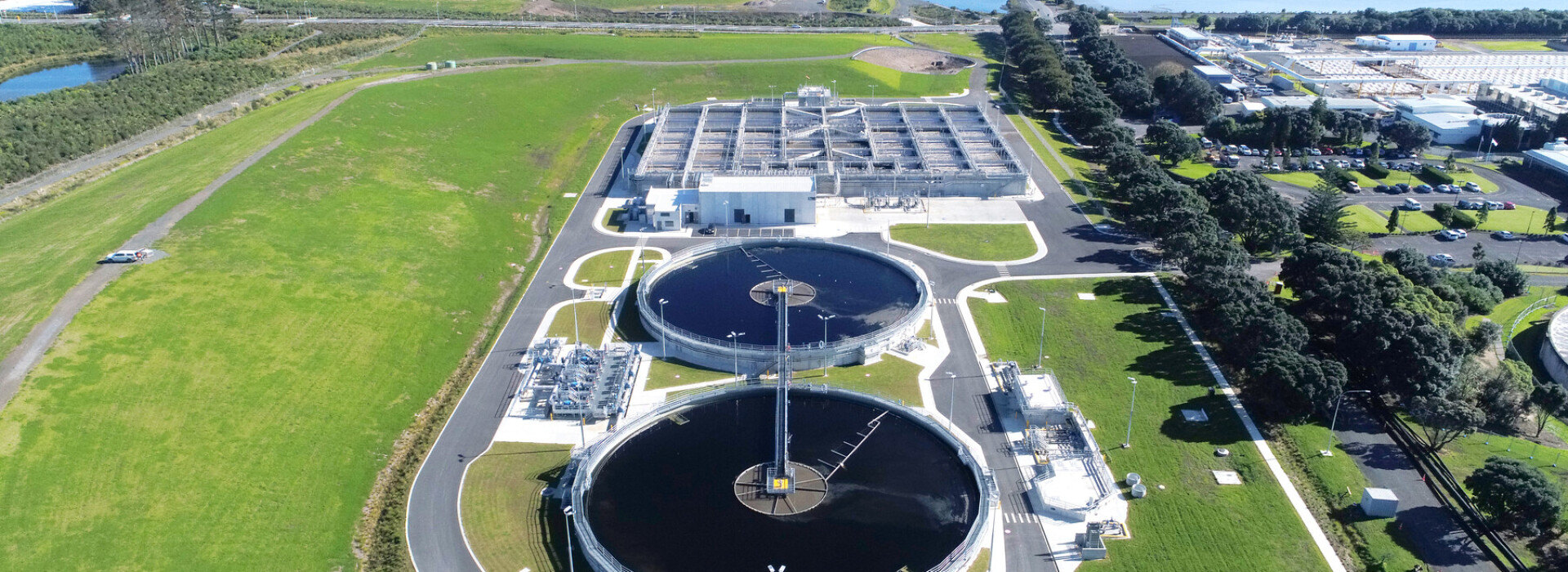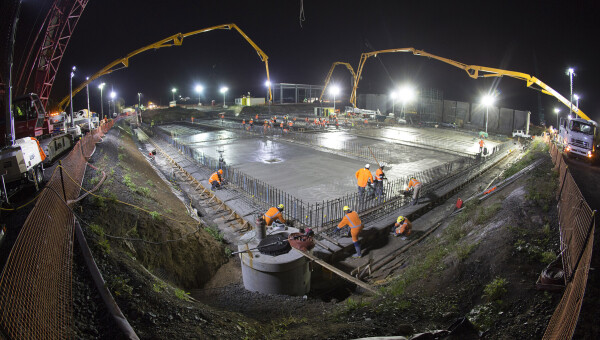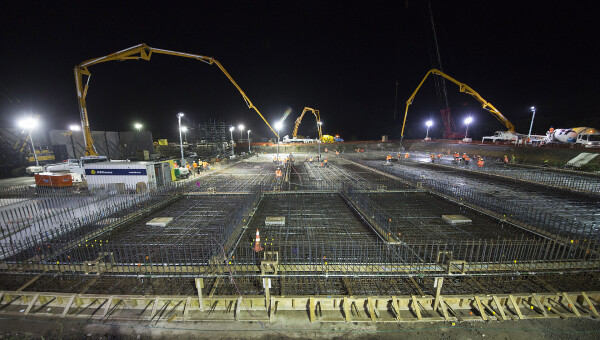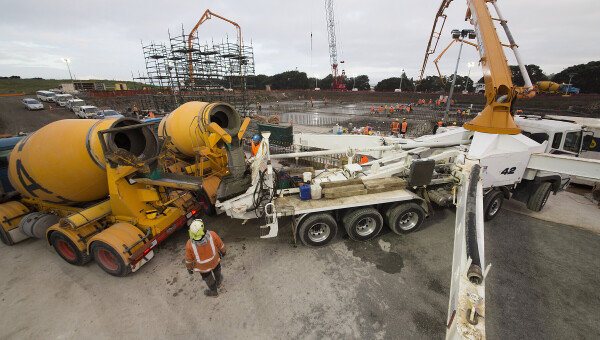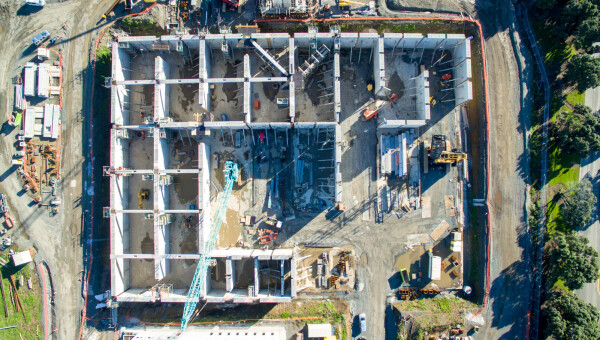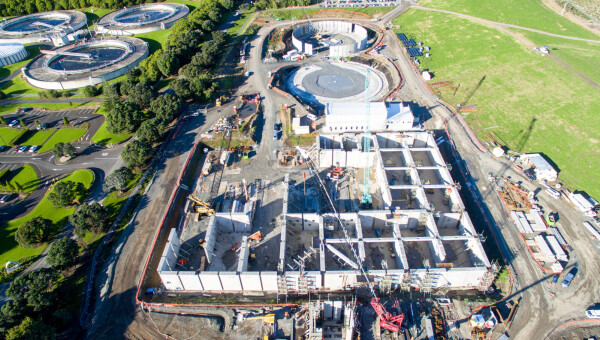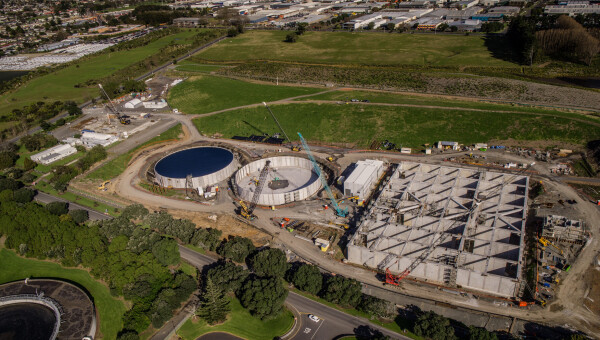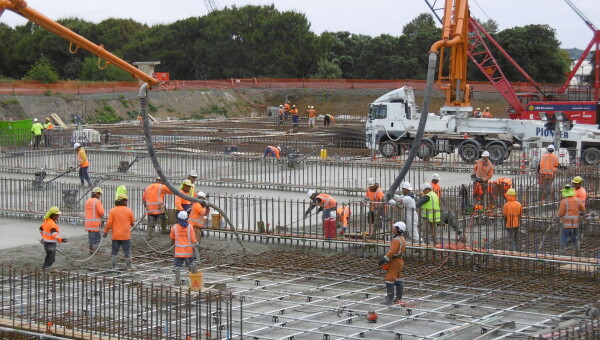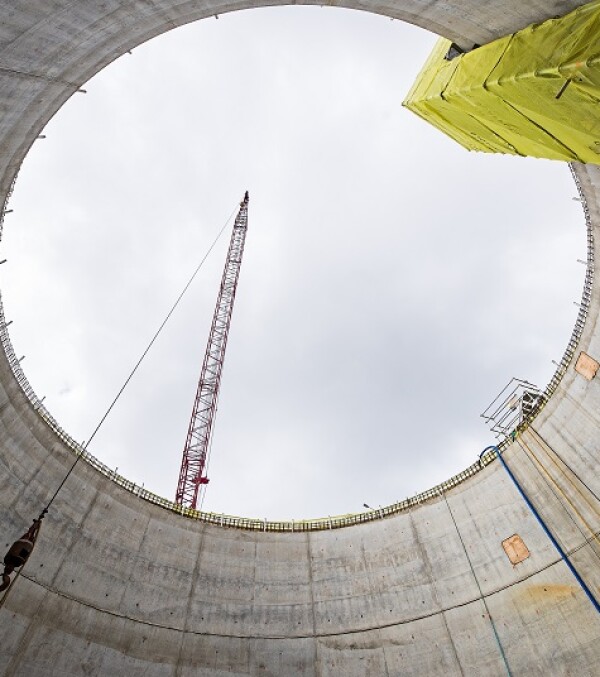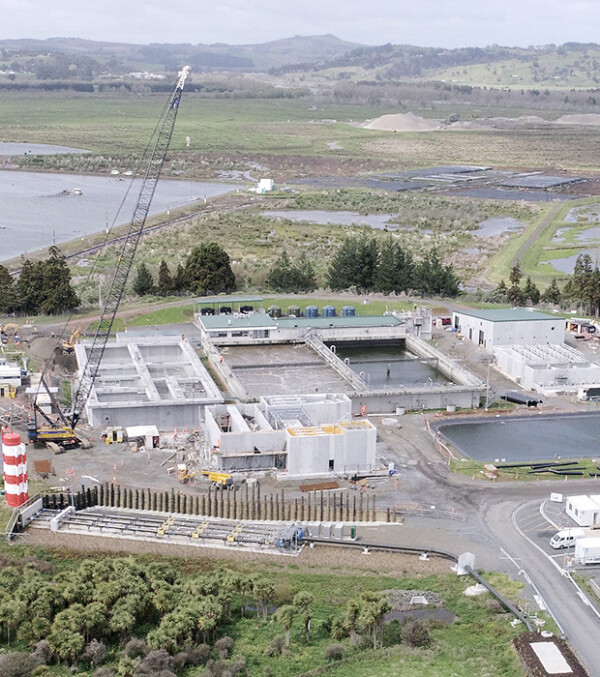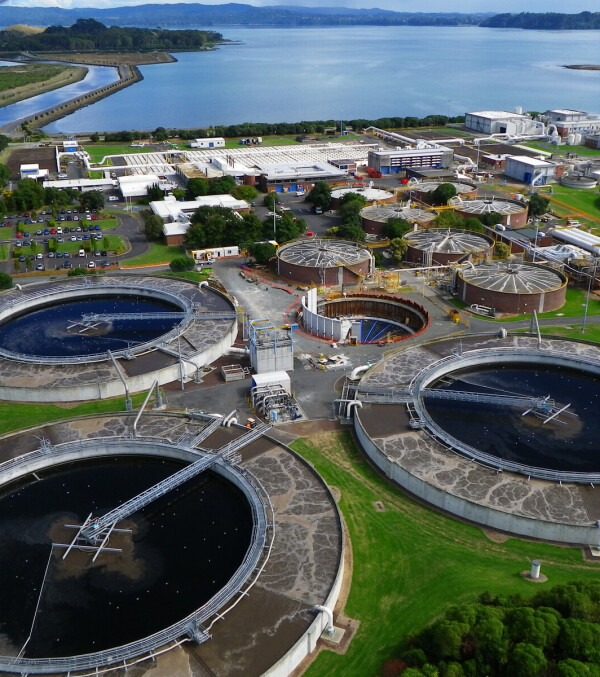|
Customer:Watercare Services Ltd Contract type:Construct only Location:Auckland, New Zealand |
Fast Facts
|
In joint venture, we delivered an additional Biological Nutrient Removal (BNR) facility for Watercare, streamlining the programme and providing alternate solutions that reduced the cost of this complex brownfield project. The facilty provides additional secondary treatment capacity for approximately 250,000 people.
The project, which was part of Watercare's expansion of their Māngere Resource Recovery Facility (MRRF) in Auckland, won a IPWEA 'Best Public Works Project' award.
In partnership with HEB, we constructed two reactors, two clarifiers, a blower building, splitter boxes (including for future duplication of reactors in 10 years), twin secondary effluent (SEF) pipelines, sludge storage tanks, and interconnecting pipework.
We successfully installed the twin SEF pipes using a pipejacking method, which required precision in execution due to a gas main, 33 kV cable, and the main fuel main from the Marsden Point Refinery to Auckland and the airport running along the alignment.
Overcoming brownfield complexity
Working adjacent to critical services and an operational plant in a constrained brownfields environment required stringent safety management. We developed a strong safety culture and implemented a thorough training and awareness programme to ensure all staff understood and proactively mitigated the risks of a high-hazard environment.
Understanding the constraints of working in a brownfield environment was essential to ensuring production targets were achieved. The JV team worked collaboratively with Watercare to enhance the programme and provide alternate solutions that saved Watercare money.
The JV was responsible for the design and construction of the reactor and clarifier tanks, which are lightweight, post-tensioned precast concrete structures. Underlying soft soils saw these large tanks founded on some 2,400 driven piles. Large precast concrete panels were cast and erected on-site to form the tank walls. This provided an economical, safer construction methodology by reducing the amount of work at height required.

